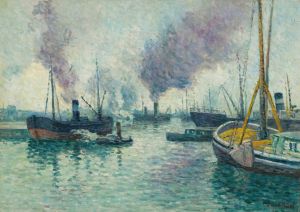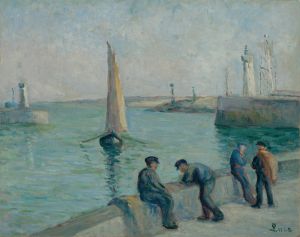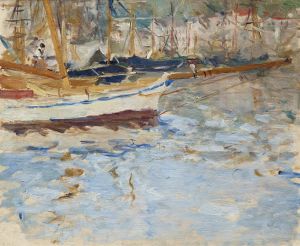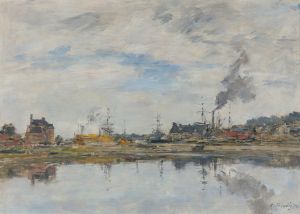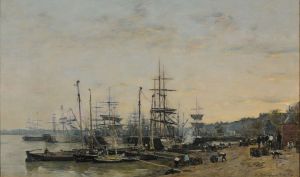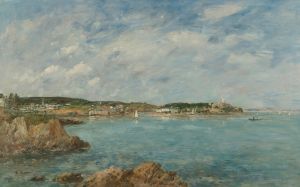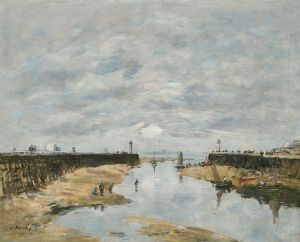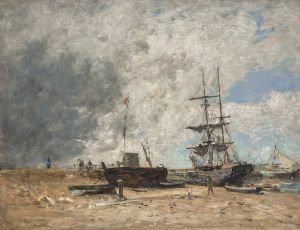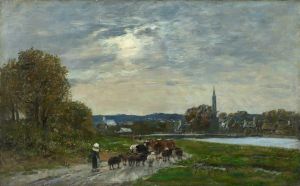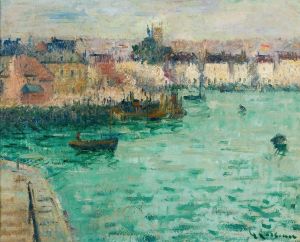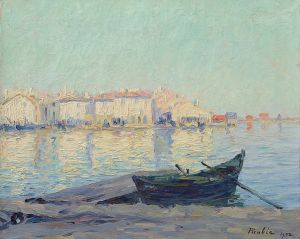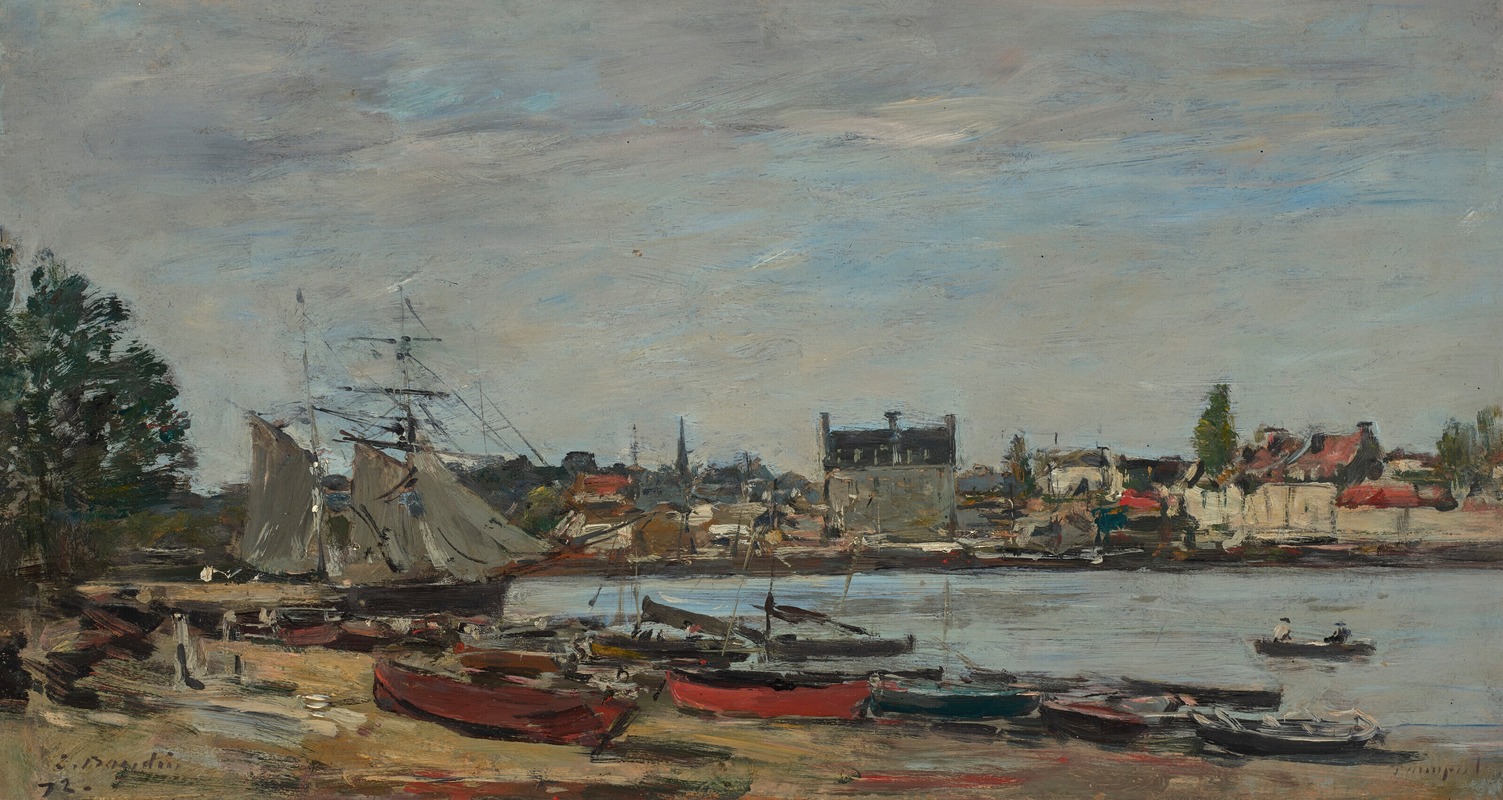
Paimpol, port et ville
A hand-painted replica of Eugène Boudin’s masterpiece Paimpol, port et ville, meticulously crafted by professional artists to capture the true essence of the original. Each piece is created with museum-quality canvas and rare mineral pigments, carefully painted by experienced artists with delicate brushstrokes and rich, layered colors to perfectly recreate the texture of the original artwork. Unlike machine-printed reproductions, this hand-painted version brings the painting to life, infused with the artist’s emotions and skill in every stroke. Whether for personal collection or home decoration, it instantly elevates the artistic atmosphere of any space.
Eugène Boudin, a prominent French painter and one of the precursors of Impressionism, created the artwork Paimpol, port et ville in the late 19th century. Known for his masterful depictions of coastal scenes and skies, Boudin often painted en plein air, capturing the natural light and atmosphere of his surroundings. This particular painting focuses on the port and town of Paimpol, a small coastal community in the Côtes-d'Armor department of Brittany, France.
Paimpol was historically a fishing town, particularly known for its involvement in cod fishing expeditions to Iceland during the 19th century. The town's maritime heritage and picturesque setting made it a compelling subject for artists like Boudin, who were drawn to the interplay of light, water, and human activity in such environments. In Paimpol, port et ville, Boudin captures the essence of the bustling port, with its boats, buildings, and the surrounding natural landscape.
The painting showcases Boudin's characteristic style, with loose brushstrokes and a focus on the effects of light and atmosphere. His ability to depict the ever-changing skies is particularly evident in this work, as the clouds and light reflections on the water create a dynamic and vivid scene. The composition likely includes elements typical of Paimpol's port during that era, such as fishing vessels and the architecture of the town, though specific details of the painting's content may vary depending on the version or interpretation.
Boudin's works, including Paimpol, port et ville, were influential in the development of Impressionism. His focus on capturing the transient qualities of nature and his dedication to painting outdoors inspired younger artists, including Claude Monet, who regarded Boudin as a mentor. Today, Boudin's paintings are celebrated for their ability to convey the beauty and atmosphere of coastal life in 19th-century France.
While the exact date of creation for Paimpol, port et ville is not specified, it aligns with Boudin's broader body of work from the 1870s to the 1890s, a period during which he extensively painted scenes from Brittany and Normandy. The painting is an example of Boudin's enduring legacy as a master of landscape and marine art.





